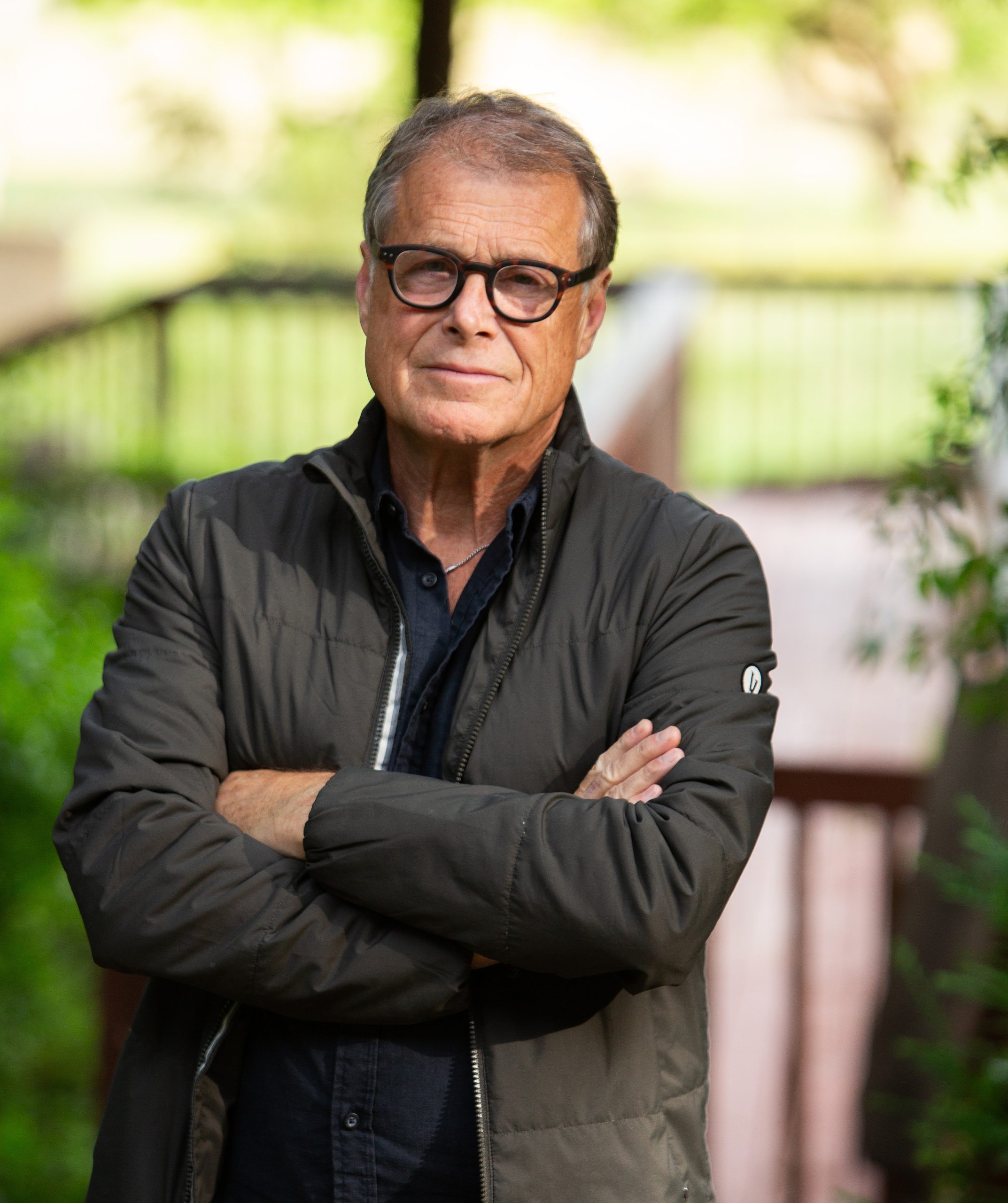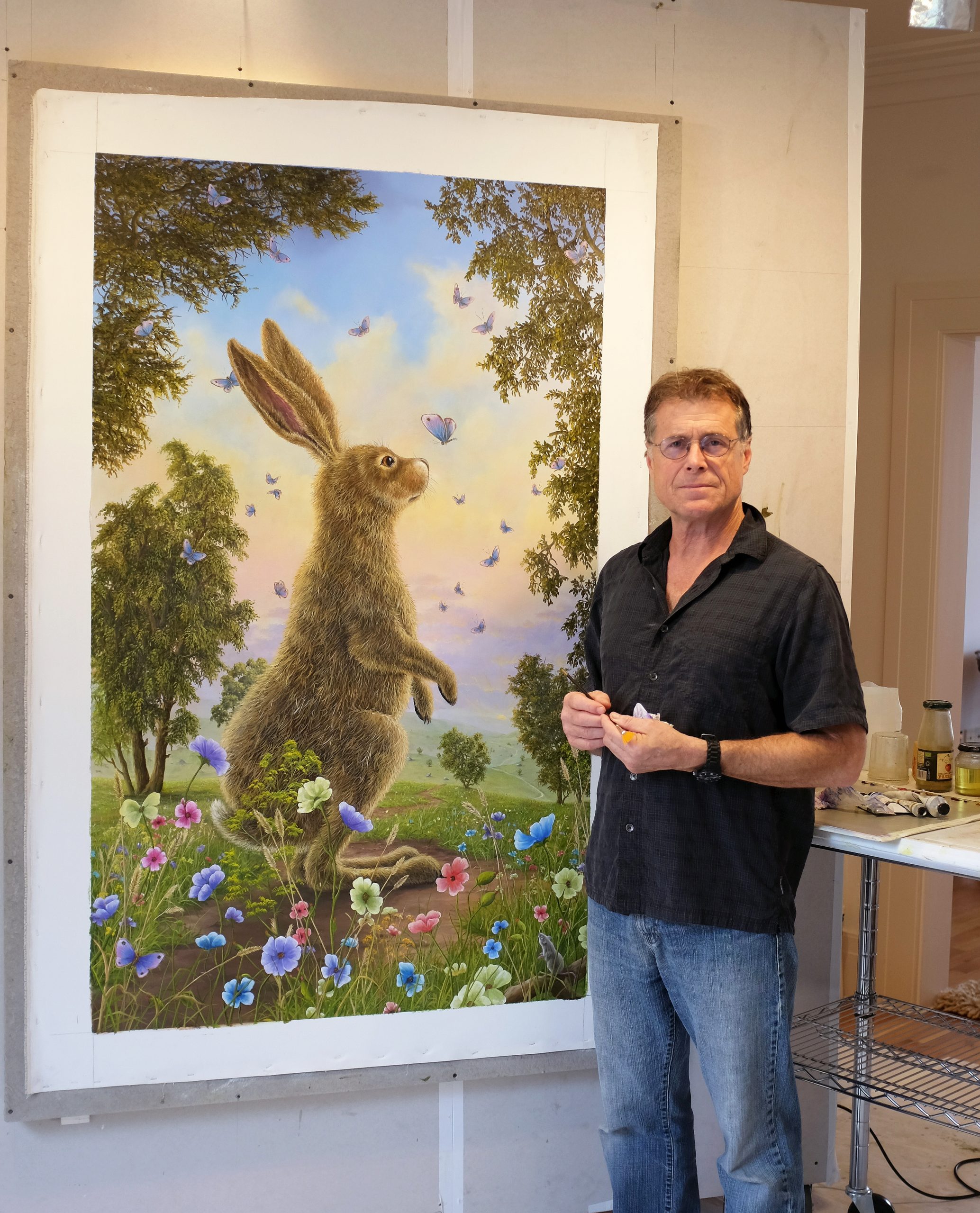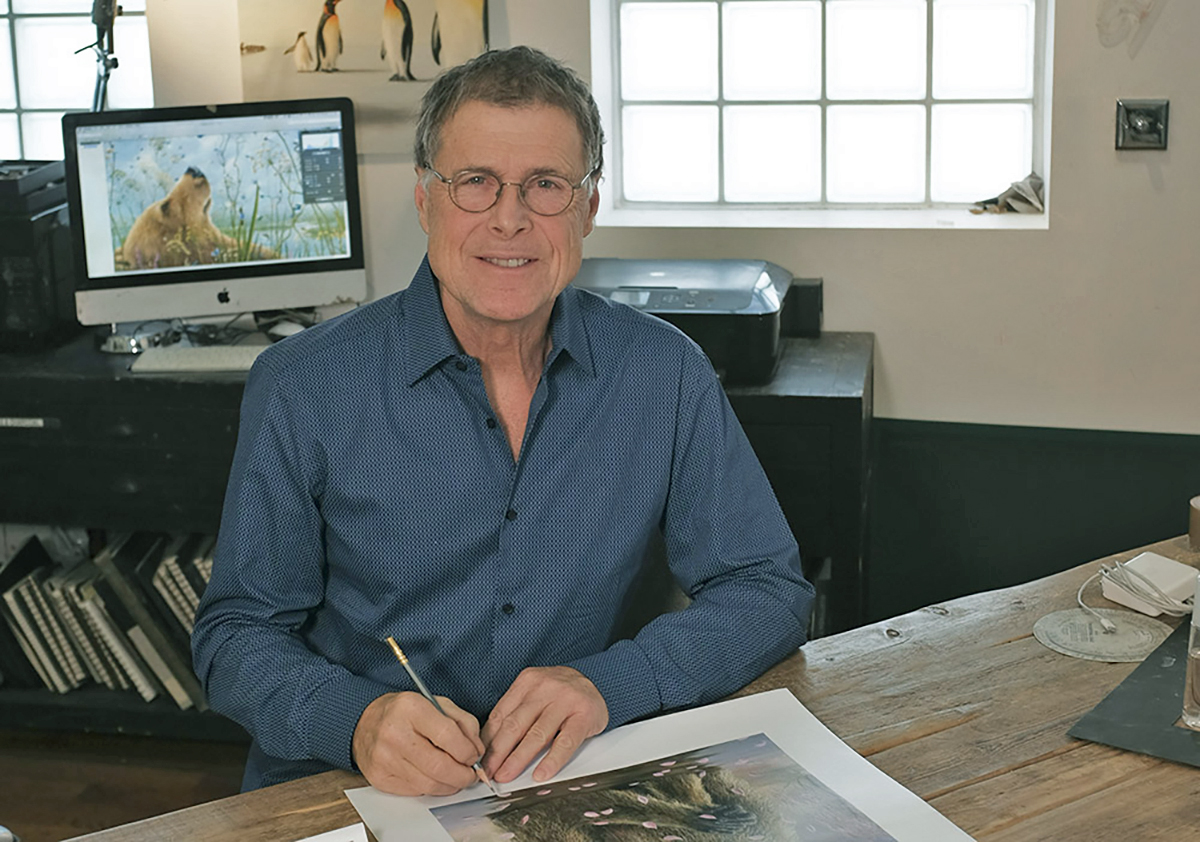ABOUT
Robert Bissell’s paintings create a completely different atmosphere from our daily experience, inviting us to learn more about ourselves and our place in the world. His narrations of animals are a mirror for the human condition, self-definition and reflection. However, these are not mere children’s tales – quite the contrary. Bissell’s work invites us to reflect on the environment, life, death, renewal and the stages of transformation, departure from the safety of family, and making our way in the world.
Bissell grew up in rural England where animals, Celtic legends and bucolic landscapes were part of his daily life. His keen interest in visuals and storytelling began at an early age, documenting life around him through photographs and reading the children’s classics: Winnie the Pooh, The Wind in the Willows and Watership Down, which later informed and influenced his art. He spent hours stalking wildlife on the moors close to his house to see how close he could get before they sensed his presence. He eventually left country life to study art and photography and received an MFA degree from the prestigious Royal College of Art in London.
After completing his studies, Bissell spent four years travelling the world, working on cruise ships as a photographer to pay his way. In 1982, after settling in San Francisco, he worked in advertising as a photographer and eventually as creative director for the fast-growing Sharper Image Corporation. In 1992, he started his own retail catalog company in Portland, Oregon, which was eventually sold to Readers Digest.
By 1995 he began to wonder if the long-term implications of the industry he was in aligned with his worldview; the catalogs he produced wasted natural resources. He decided to explore the possibilities of telling people about nature and his view of it on canvas. “I had forgotten why I wanted to be an artist in the first place”, he said. “I wanted to get that back, and I am glad I did before it was too late.” The corporate grind had also taken its toll. Bissell missed doing his own art and had become disillusioned with using a computer all day long to create visuals. He wanted to use his hands to make art and decided he would teach himself to do something that could be meaningful to us all, whatever that might be.
Bissell took one cue for his art from the study of early Celtic people and the native Americans of his adopted country. Early indigenous people believed the natural world was the bridge that connected earth and spirit, with animals acting as spiritual intermediaries. Now, most people live in cities and suburbs, separated from that world. “Animals used to be closely involved with humans as messengers with magical functions,” he says, “I wanted to restore their place and give them a renewed voice.” In doing so, Bissell provides a view of the world that challenges our assumptions about our role on this planet and the modern society we are creating for future generations.
Bissell’s paintings appeal to the intellectual child in all of us, reminding us of the mythic and universal human values in the great heroic-quest stories. His work encourages us to reflect on nature, the roads we travel, and the choices we make along the way. His own story encourages us to follow our passions and have the courage to do whatever it takes to stay on that path.
The animal narrative in the art world
Despite his careful and intricate compositions, Bissell’s paintings do not neatly fit into traditional ideas or categories in the art world. Bissell is interested in zoomorphism—imagining humans as non-humans. He intentionally explores this concept in his art, using it as an invitation to rediscover nature and through it, our own true nature as human beings.
Bissell deliberately paints animal figures to disarm—his animals often stand on two feet like humans and can be totemic symbols or guides for us. He paints familiar animals like bears and rabbits to bring viewers back to a more child-like state with the hope of reawakening feelings that may have been forgotten or distorted during the transition from childhood to adulthood.
The settings of his paintings are purposefully beautiful. They reflect the splendor and grandeur Bissell sees in nature, which he feels is important to share even if it runs counter to a prevailing theme in contemporary art that relevant works or serious messages cannot be “too pretty.”
Bissell wonders, “What I am attempting to communicate through my art might be missed because of its initial appearance. It is different from what’s been at the forefront of the contemporary art movement for the last 40 years or so.”
“For me, it is not humans and nature. Instead, it is humans as nature.”



